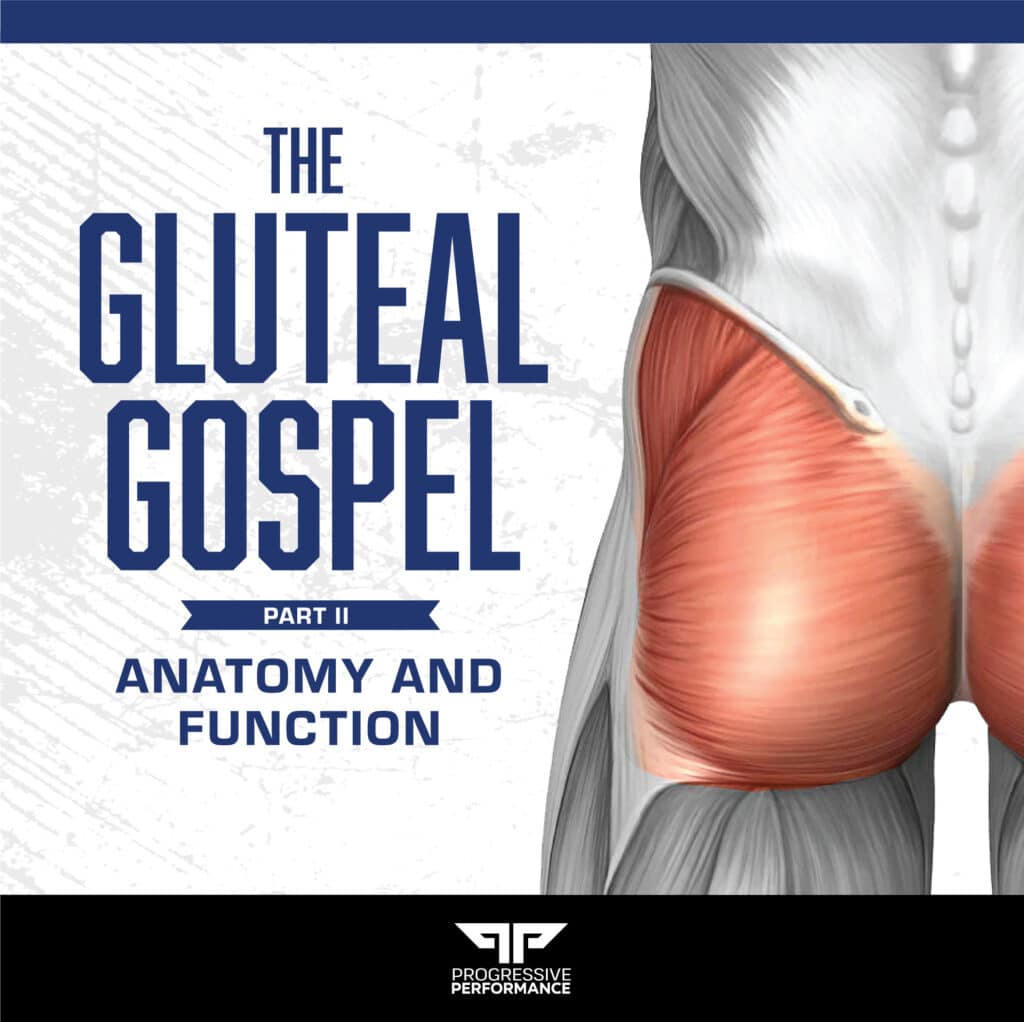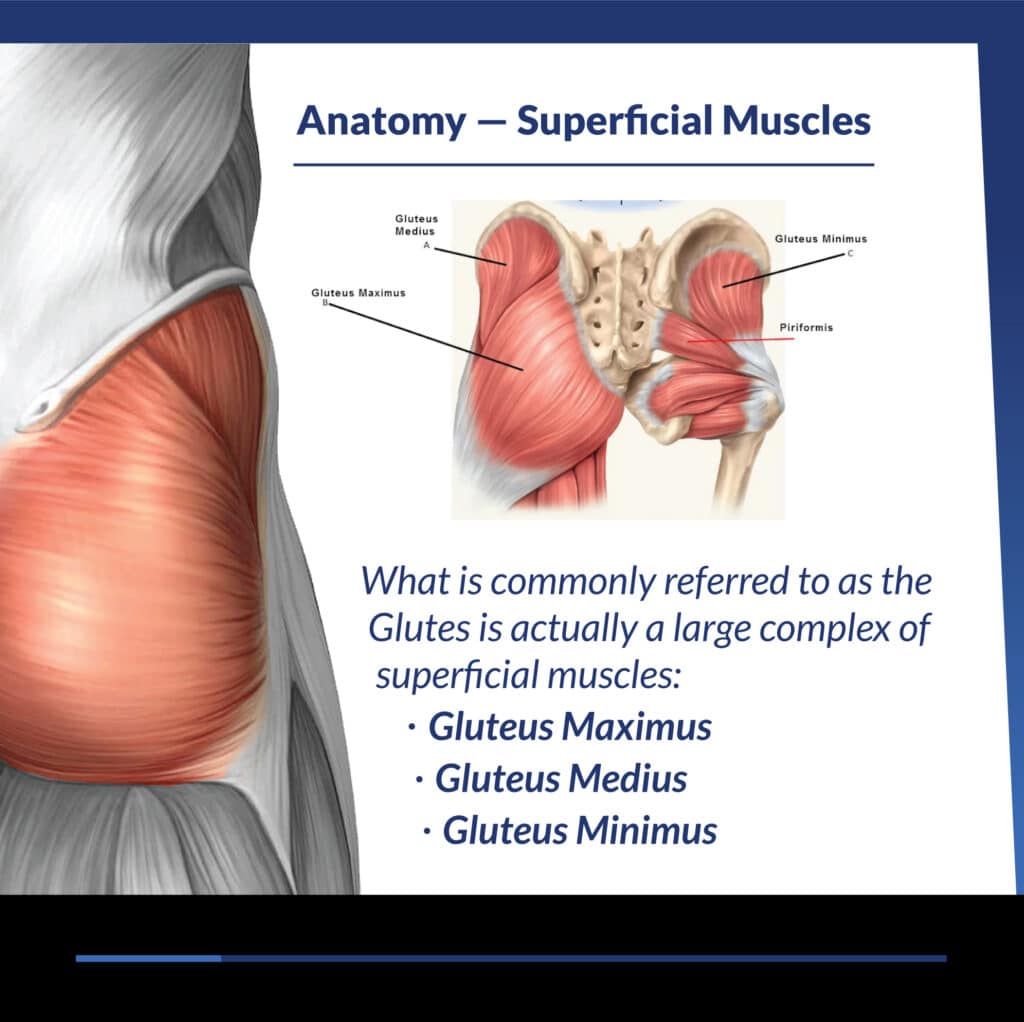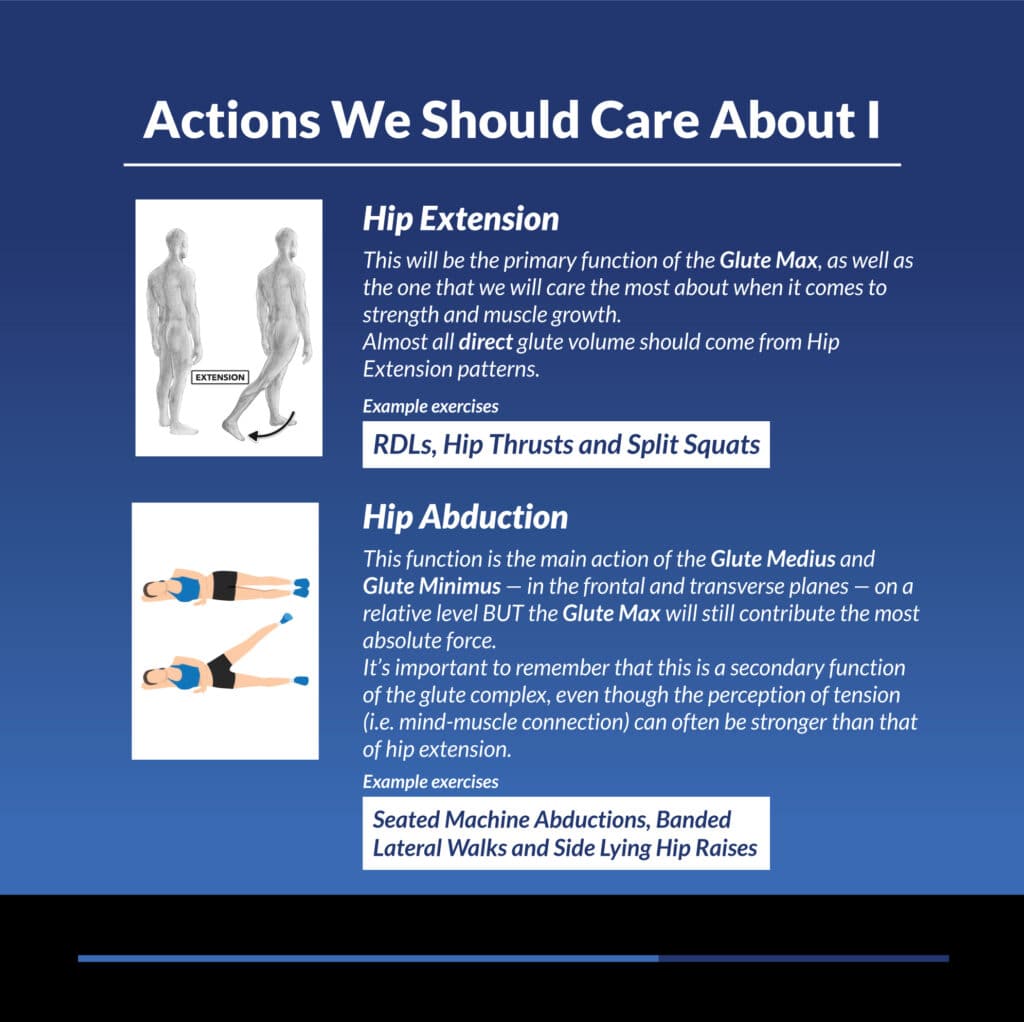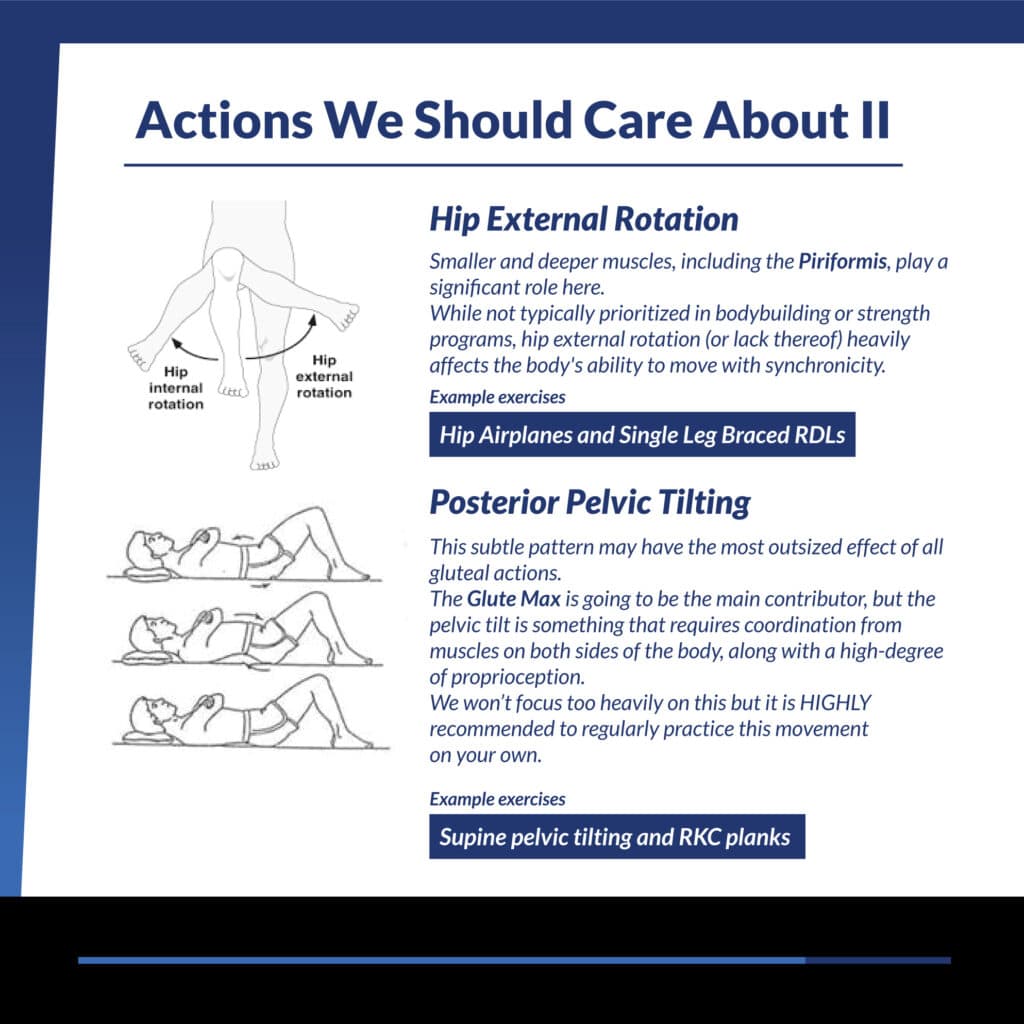Anatomical Architecture
- What is commonly referred to as the “glutes” is actually a large complex of superficial muscles: the gluteus maximus, gluteus medius and gluteus minimus.
- Deeper and less known lie the piriformis, gemellus superior and inferior, quadtratus femoris, and obturator internus. While we will not focus much on these individual muscles, acknowledging their presence provides a more comprehensive understanding of the glute complex.
- The gluteus maximus, the largest muscle in the human body, plays a critical role in force and power generation through hip extension. Additionally, the entire gluteal complex works together to continuously aid in pelvic stabilization, in a more passive and postural role.
- Given this dual role in force generation and stability, it’s reasonable to theorize that the glutes would benefit from a variety of repetition ranges and intensities. (This is supported by research revealing a relatively even distribution of Type 1 and Type 2 muscle fibers in the glute max.)
Actions We Should Care About
- Hip Extension– As mentioned above, the glute max is going to be primarily responsible for this function. Example exercises include RDLs, Hip Thrusts and Split Squats.
- Hip Abduction– This function engages the glute max as well as the glute medius and minimus in the frontal and transverse planes. It’s important to remember that this is a secondary function of the glute complex, even though the perception of tension (i.e. mind-muscle connection) can often be stronger than that of hip extension. Example exercises include Seated Machine Abductions, Banded Lateral Walks and Side Lying Hip Raises.
- Hip External Rotation– Smaller and deeper muscles, including the piriformis, play a significant role here. While not typically prioritized in bodybuilding or strength programs, hip external rotation (or lack thereof) heavily affects the body’s ability to move with synchronicity. Example exercises include Hip Airplanes and Single Leg Braced RDLs.
- Posterior Pelvic Tilting– This subtle pattern may have the most outsized effect of all gluteal actions. The glute max is going to be the main contributor, but the pelvic tilt is something that requires coordination from muscles on both sides of the body, along with a high-degree of proprioception. We won’t focus too heavily on this but it is HIGHLY recommended to regularly practice this movement on your own. Don’t worry too much about volume or frequency as there is very little risk of overdoing it. Example exercises include supine pelvic tilting and RKC planks.
*Note: Because hip extension is the primary function of the glute complex, the “Primary Movements” sections below will focus mostly on this pattern.






